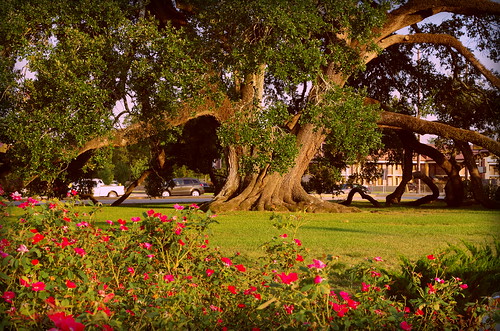Being from South Louisiana where good cooking and eating well is a way of
life and occasionally an Olympic sport it's hard for me to admit that I love
fast food (not exclusively of course). There is something really great about
being able to go into a restaurant (or drive thru) anywhere in the country and
be eating consistently acceptable and sometimes good food in just a couple
minutes. These meals are not especially memorable but they do fulfill the
immediate need for nourishment and generally please the palate quickly and
cheaply.
Gourmet dining is a completely different experience. It takes time. You
enter the restaurant, are seated and spend some time enjoying a beverage and
reviewing the menu. The waiter tells you about the specials. You ask questions
and you make your decision. Then you enjoy an appetizer or a salad while the
kitchen prepares your meal.
In South Louisiana, especially New Orleans, a fine dining experience can
take two or three hours. By the time you leave having enjoyed your appetizer, salad,
dinner, and dessert and coffee. You have a memory to savor and share with
others.
I consider photography to be similar to dining in many respects.
First there is the "fast food" kind of photography that fulfills
your immediate need and generally provides a pleasing and acceptable result
quickly and cheaply. The main requirement for this kind of photography is to
quickly and easily take a great many snap shots with little or no concern for
painstaking set up or composition. One
approach is to take a bunch of pictures knowing that at least some of them will
be keepers and if nothing else you will have adequately recorded the event or
situation for posterity.
Digital cameras, especially point & shoots are ideally suited for this
although there are many film cameras that can do much the same thing. You can
see these "fast food" photographers wherever you go. Whether they're
playing tourist capturing the sights on a vacation trip or watching their kid's
ball game or birthday party they take several quick shots and then review their
captures on the camera's (or their phone's) little LCD viewing screen.
Sometimes these folks seem to spend more time looking at their LCD screens
than watching what is actually going on in front of them. It's almost as if
they are experiencing life through those little screens.
"Gourmet dining" photography or "Slow Photography" as
some have called it takes a completely different approach. Instead of bringing
a camera (or phone camera) along for the “ride” some folks actually go out with
the single minded intention of making one or more photographs. They carefully
and thoughtfully select the subject, camera and lens and frequently use a
tripod. If shooting film they will often spend as much time selecting the
appropriate film as one might in selecting a fine wine to go with a gourmet
meal.
Instead of firing off many shots hoping for one or two keepers they will
carefully plot and plan waiting for the perfect moment when everything comes
together and the light is just right and then they will take one or maybe two
shots knowing as they trip the shutter that they have exactly what they wanted
“in the box.”
“Slow Photography” is not about equipment. It is about a philosophy and a
way of doing things. Film photography
lends itself to “Slow Photography” just because so many decisions have to be
made up front with film and there is no immediately available image. Digital
photographers can however, choose to slow themselves down and take full control
of their photography just easily as film photographers.
“Slow photographers” make a picture much like a painter creates a painting.
I encourage you to try it. You might discover a whole new world of
photography.
While it is certainly not my best photograph the photo above epitomizes
exactly what I’m talking about – fast food and slow photography! Once I found
this location I literally had to crawl through the bushes to get to the right
spot to set up and capture the image I had in my mind from the beginning. If
you look closely you will see four different fast food restaurants and a
Daiquiri joint forming the background for my all-time favorite photo-subject, a
fire hydrant.
Bon appetit!





